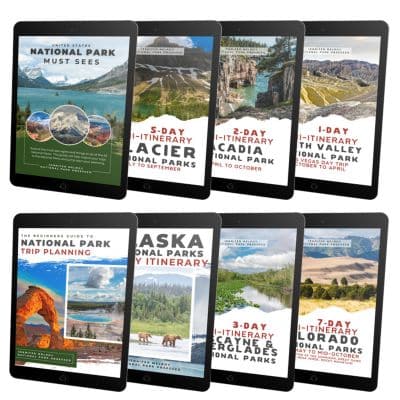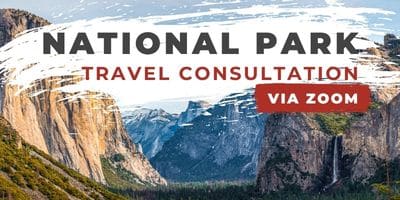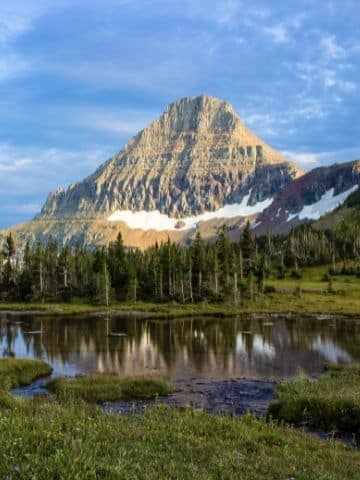
National Parks in Montana: Explore the 8 Montana National Parks (2024 Update)
- Jennifer Melroy
- Last Modified December 22, 2023
- First Published on October 3, 2021
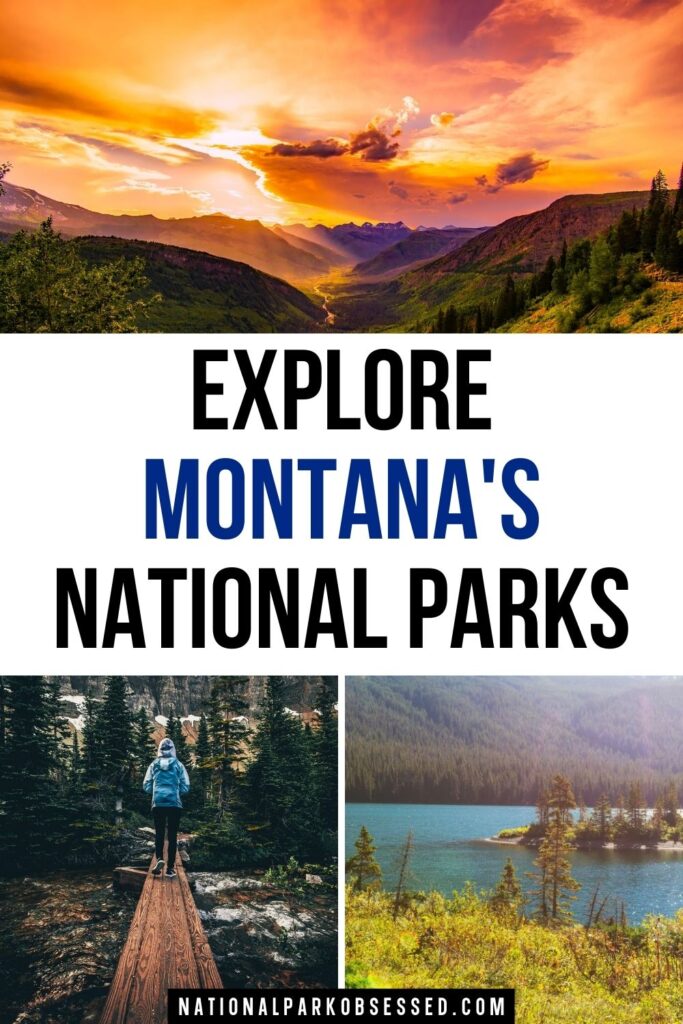
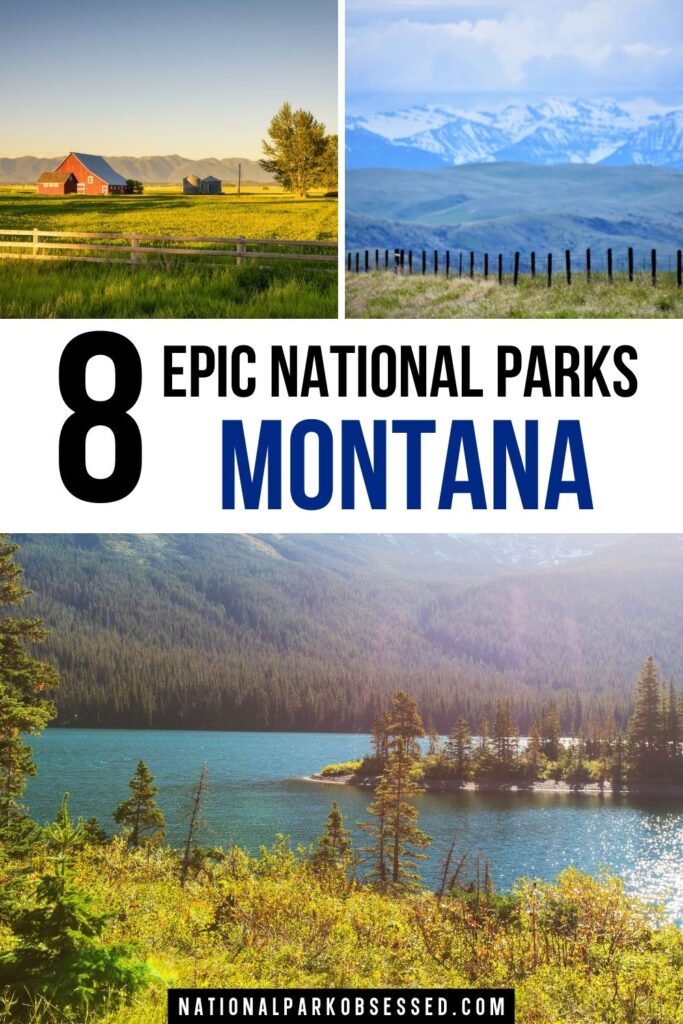
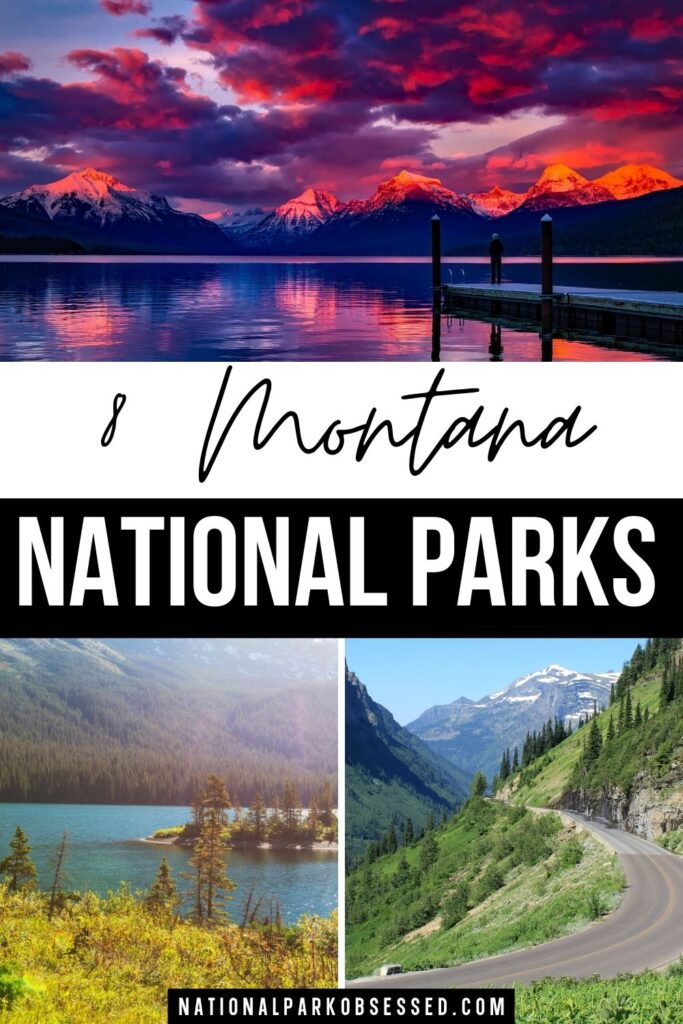
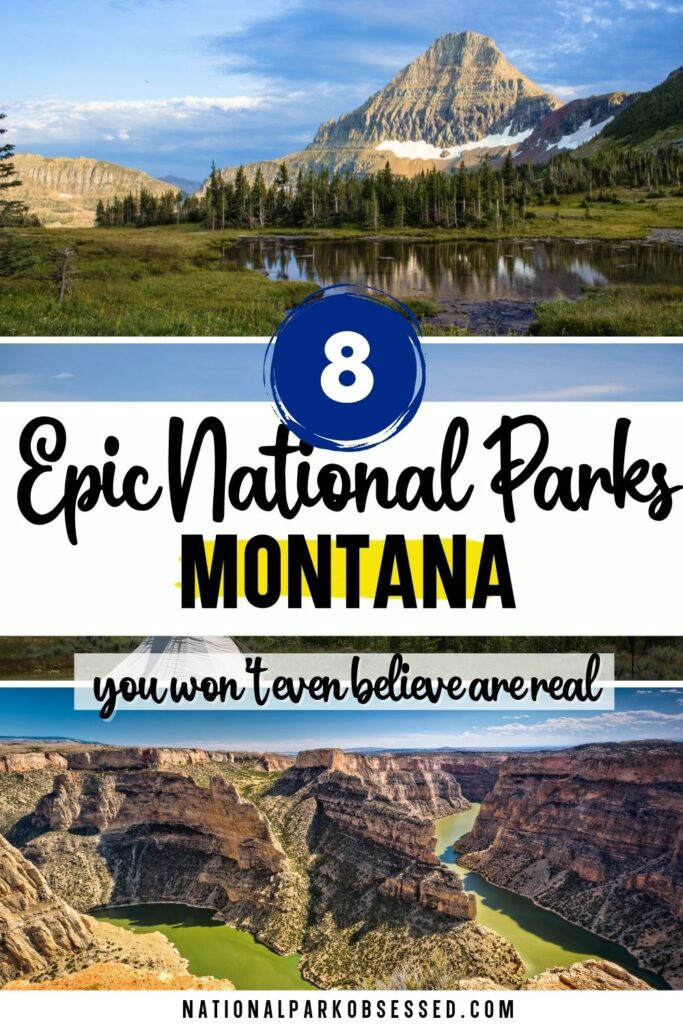
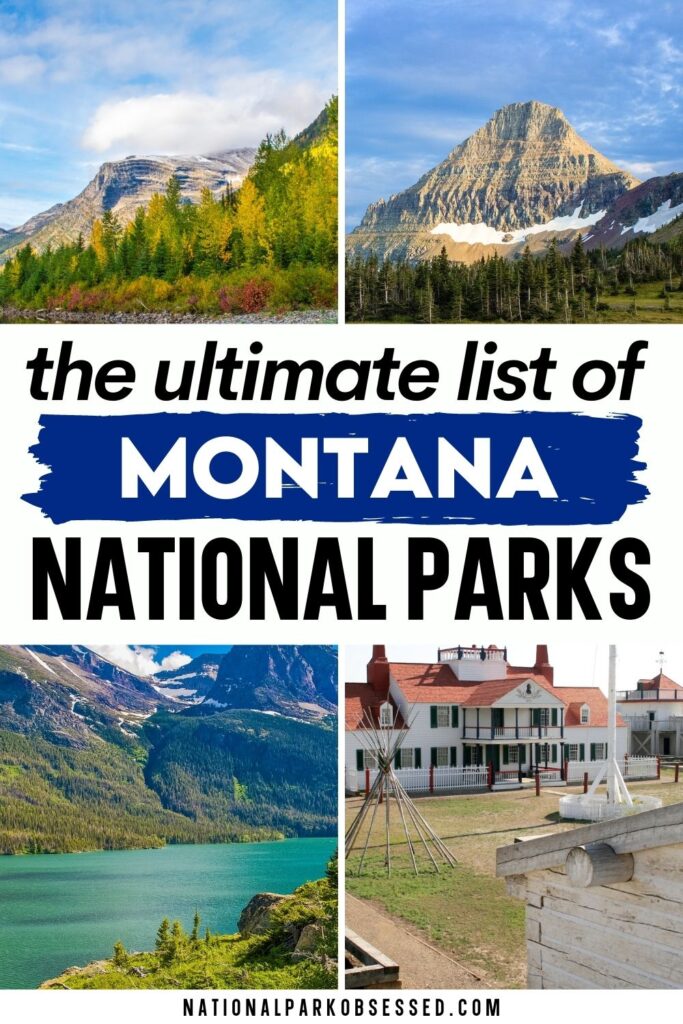
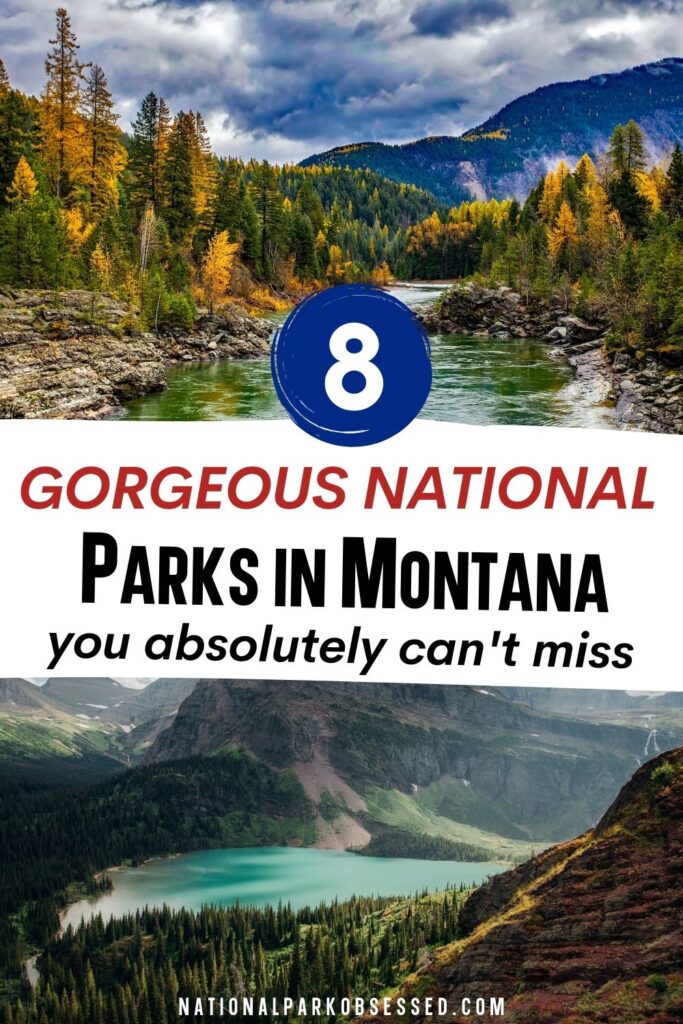

Montana is the Treasure State and the state does not disappoint that nickname. This state has a wealth of natural wonders for visitors to come and enjoy. Bask in the beautiful sunset views with glaciated mountains, lush green meadows, and crystal-clear blue water. One of the state’s treasures is the Yellowstone National Park, the first and one of the most popular parks in America. This park includes some of the most amazing geological and geothermal treasures in the world.
More than all of these, Montana also conserves many historical sites that were prominent for early Native American settlers, trading history, cowboy culture, and much more. With remnants of history still present in the state since the ice ages, there is no shortage of worth-it destinations for any tourists. From active adventure to just appreciating the view, Montana has it for you!
In this article, we will explore the 8 National Parks in Montana. We will provide a brief overview of the park, things to do in the Montana National Parks and provide a map of the National Parks of Montana.
Table of Contents
This post may contain affiliate links, meaning if you book or buy something through one of these links, I may earn a small commission at no extra cost to you! Read the full disclosure policy here.
NATIONAL PARK TRIP PLANNING RESOURCES
Here are some of the best resources to plan your national park travels. If you are new to the parks, National Park Travel Planning Bundle is the perfect resource to help you plan your dream trip, get it planned, and reduce the stress of planning your National Park trip.
- National Park Itineraries: Let someone else do the planning with our pre-planned National Park Itineraries for less than $6 a day.
- Get Free Entrance: The America the Beautiful National Park Pass is an $80 pass that is valid for 12 months. The pass provides free entrance to the National Parks and more than 2,000+ other federal lands.
- Make sure you have a National Park Passport: Here is my favorite National Park Passport.
- For Flights: Use Skyscanner to get the best prices on your flights.
- For Rental Vehicles: Browse for deals on rental cars at RentalCars.com. Or rent an RV or campervan with RVshare or Outdoorsy.
- For Hotels: I book my hotels on Hotels.com and Booking.com.
- For Vacation Rentals: I love VRBO for my vacation rentals.
- For Camping: If making camping reservations in the parks, I use Recreation.gov. For private campgrounds, I use Campspot.
- Buy Outdoor Gear: I get most of my outdoor gear at REI.
- Get Trail Maps on your phone with
- Looking for National Park Gift Ideas: Here are the 55+ Best National Park Gifts Ideas.
- Don’t forget travel insurance: I get my travel insurance through World Nomads.
Map of National Parks in Montana
Montana National Parks
Montana is part of the West Coast Region.
Big Hole National Battlefield
Big Hole National Battlefield was established to commemorate a somber memory of America’s history and honor the lives of Nez Perce Tribe. Back on August 9, 1877, U.S. Government forces found the sleeping camp of the Nez Perce tribe and before dawn have already slain at least ninety of the Nez Perce people.
Before the European settlers arrived in the Americas, the Nez Perce inhabited present-day Washington, Oregon, and Idaho. After many years of maltreatment from the government and other European settlers and several violent engagements, the tribe decided to migrate to Canada to seek refuge with a neighboring tribe. Let by Chief Joseph, they took hundreds of their people and made their way North. Unfortunately, U.S. forces found their sleeping camp as they were making their journey and engaged them in a very violent, bloody war. After the battle, over ninety Nez Perce people died – mostly women and children. There were about forty casualties among the U.S. forces.
This site was designated as a national monument on June 23, 1910. It is included as one of the 38 locations of the Nez Perce National Historical Park.
Things to do: Hiking, Ranger Programs
How to get there: By car, drivers can go on Highway 43 ten miles west of the town of Wisdom in southwestern Montana. The nearby airport is Bert-Mooney Airport in Butte. The nearby bus station is located in Dillon, MT, 75 miles southeast of the park.
Where to Stay: Accommodation is not available in Big Hole National battlefield, but travelers can go to the nearby town in Dillon, where they offer various hotels.
Entrance Fee: Free
Official Website: Click Here
Map: Download
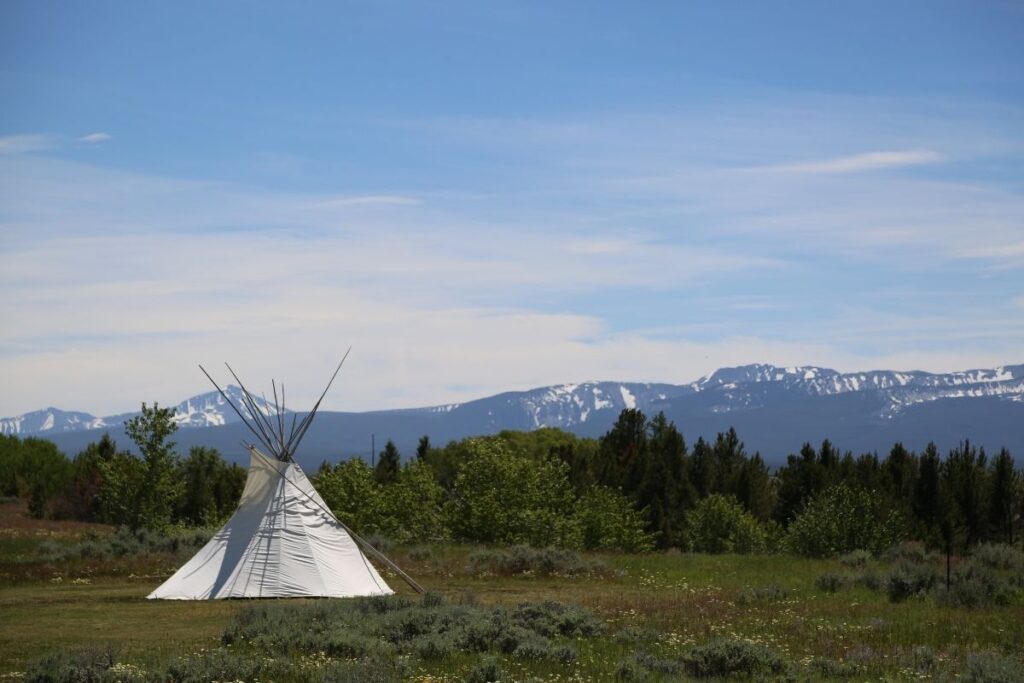
Bighorn Canyon National Recreation Area
The Bighorn Canyon National Recreation Area offers an escape from the hustle of city life. Visitors have over 120,000 acres of natural landscapes, astonishing views, and a wealth of wildlife to explore and enjoy. Between the border of Wyoming and Montana, the Bighorn Canyon National Recreation Area includes the Yellowtail Dam, the Bighorn River, and Lake, and parts of the Pryor Mountain Wild Horse Range.
Visitors frequent the area to bask in nature’s glory and learn about 10,000 years’ worth of history in this area. Travelers can come to fish in the Afterbay Lake or the Bighorn River, where trout are famous and plentiful. There are also four historical ranches to tour and explore. There are also several trails for hikers to enjoy and learn about the experiences of indigenous people that came before. On your hike, you can spot some Bighorn Rams, mule deer, and even black bears on site. There is so much for anyone who loves nature to explore this recreation area, one day wouldn’t even be enough! That really explains why there are over two hundred thousand visitors that come back each year to enjoy what this area has to offer.
This was established as a national recreation area on October 15, 1966.
Things to do: Boating, Hiking, Fishing, Hunting,
How to get there: By car, take Interstate 90 south for 43 miles to Hardin, Montana. In flying, visitors can take Logan International Airport in Billings, Montana, for either North or South District.
Where to Stay: Bighorn Canyon does not offer lodges the nearest hotels, inns, and motels are located in Billings City. They offer four camping grounds for visitors.
Entrance Fee: Free
Official Website: Click Here
Map: Download
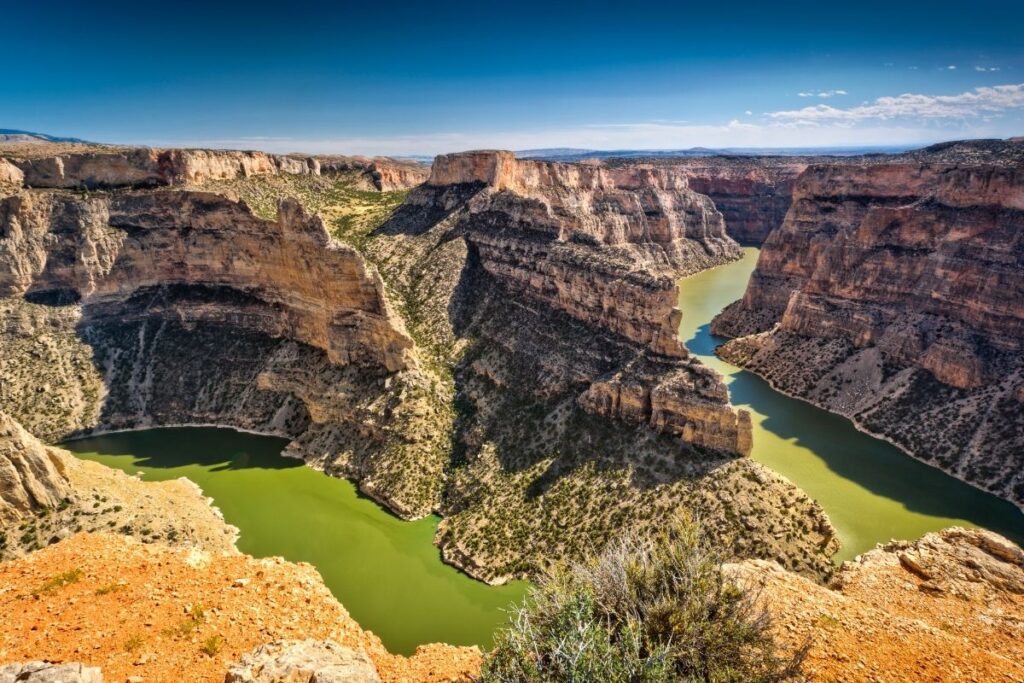
Fort Union Trading Post National Historic Site
Back in the 1800s, this area of America predominantly depended on trading as a form of business and to get the essential items for their daily lives. The Fort Union Trading Post National Historic Site preserves one of the most prominent fur trading spots of the time. This was officially used by the American Fur Company and it is believed that this post-traded over 25,000 buffalo robes and about 10,000 USD-worth of items every single year. Other goods that were traded on-site were beads, guns, cloth, alcohol, and much more.
This site features a partial reconstruction of the original fort located in the Upper Missouri River. The National Park Service aimed to reconstruct areas to depict how the fort would have looked like in the 1800s according to excavations and drawings from the time. Gain a glimpse of how the business worked during the time and view the mercantile life of 1800s Native Americans and European settlers.
In 1961, the Fort Union Trading Post National Historic Site was established under the care of the National Park Service.
Things to do: Guided Tours, Indian Art Showcase
How to get there: Williston, ND, and Sidney, MT, two of Fort Union’s gateway communities, offer commercial flights and vehicle rentals. Tourists should be aware that there is no direct public transit to the park.
Where to Stay: The nearest motel is in Fairview, Montana, which is about 15 miles southwest of Fort Union. Fort Union Trading Post does not offer public camping or overnight parking, but it does have three campgrounds for reservation.
Entrance Fee: Free
Official Website: Click Here
Map: Download
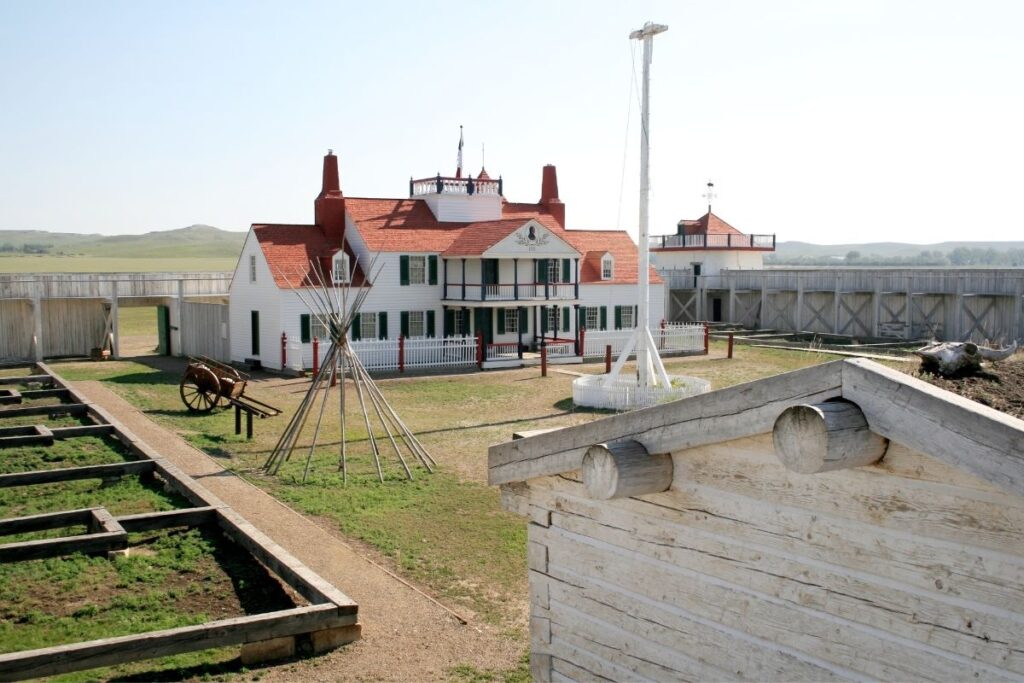
Glacier National Park
Glacier National Park is everything you’re expecting and so much more. The park, of course, features glaciated meadows, alpine forests, and the most beautiful breathtaking views of icy mountains. This national park offers natural wonders for adventurists and hikers to explore deep into the wilderness and discover the beauty of this area.
Located in the Canada-United States border, the park covers more than a million acres of land including mountain ranges, over a hundred lakes, many meadows, and several forests for tourists to come and explore. This is also nicknamed the “Crown of the Continent Ecosystem”, alluding to the plentiful wildlife in the area brought by the ideal ecosystem and climate in the area. Some tourists can spot a few of the endangered species still thriving in the area like the grizzly bear and the lynx.
First inhabited by Native Americans, then European settlers, this area also offers much cultural and historic relevance aside from the pristine natural views of the park.
This park was also named a World Heritage Site in 1995.
Things to do: Hiking, Photography, Boating, Fishing, Camping, Scenic Drives, Backpacking
How to get there: By plane, tourists can choose Glacier Park International Airport near Kalispell and is approximately 30 miles west of the West Entrance. By train, Amtrak’s historic Empire Builder train line stops year-round at West Glacier.
Where to Stay: Lodging is available in the park. Tourists can choose from three different lodges in the area.
Entrance Fee: $35 per vehicle or free with an America the Beautiful Pass.
Official Website: Click Here
Map: Download
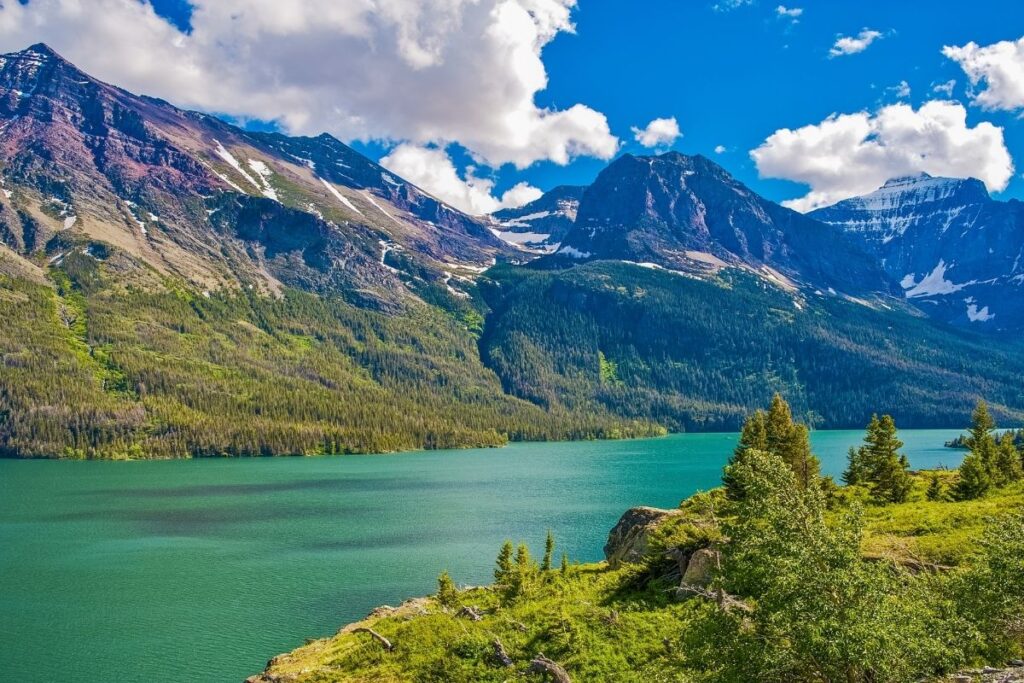
Grant-Kohrs Ranch National Historic Site
Grant-Kohrs Ranch National Historic Site offers a glimpse into the life of a true cowboy of the American West. The site commemorates and preserves the thriving cattle business in the 1850s. This site also offers a peek of the life of cattlemen during these times and honors their impact on today’s America.
The original ranch was created by Johnny Grant, a Canadian fur trader. With many years of experience as a trader, he looked for a new opportunity when the trading industry started to die out. After a chance to trade a healthy cow for several tired cattle, he was able to start his cattle business. He would nurse these cattle back to health and trade them again in the next year. After some success in this home ranch, he eventually decided to sell it to Conrad Kohrs in 1866.
Khors, or otherwise known as “Montana’s Cattle King”, operated and thrived in the home ranch. Here, he and his brother were able to innovate new ranching methods, bring grazing into a new era, and accumulate a lot of wealth and success during the time. This success rush came to a devastating halt after a harsh 1886 winter that killed almost half of their livestock and forced them to let go of the business. Today, visitors can learn more about this thriving business and learn about the success and struggles of cowboys of the time.
The Grant-Kohrs Ranch National Historic Site was created in 1972.
Things to do: Guided Tours, Ranger Program, Self-Guided Tours
How to get there: The Grant-Kohrs Ranch NHS is located in western Montana, about halfway between Yellowstone and Glacier National Parks along Interstate 90, on the outskirts of Deer Lodge.
Where to Stay: Grant-Kohrs Ranch does not offer overnight accommodation the nearest hotels, inns, and motels are located in Deer Lodge City.
Entrance Fee: Free
Official Website: Click Here
Map: Download
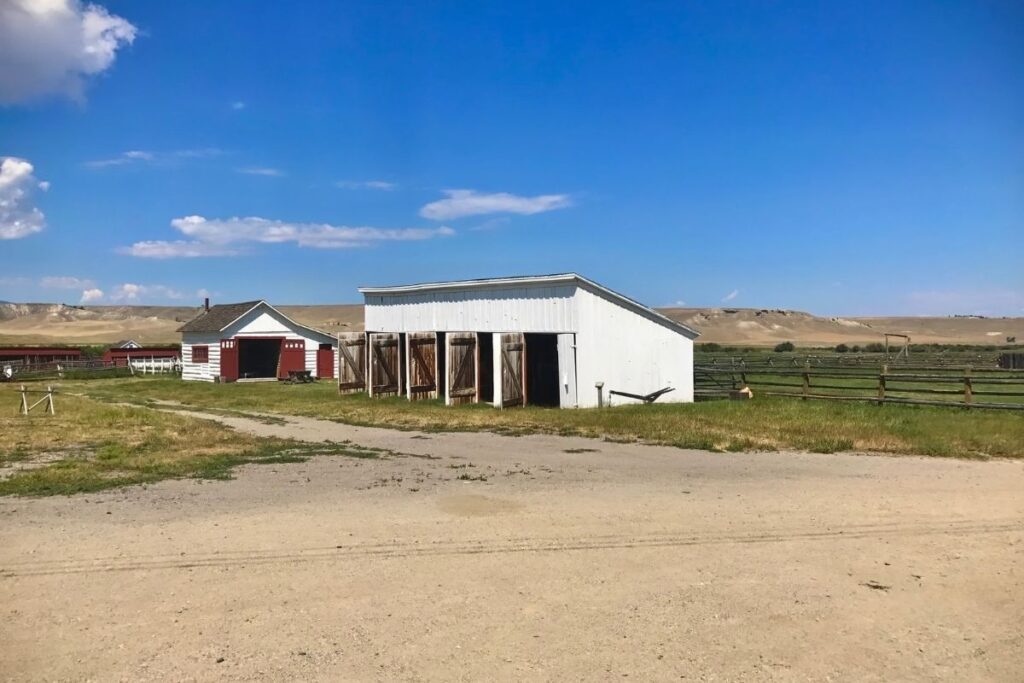
Little Bighorn Battlefield National Monument
Little Bighorn Battlefield National Monument commemorates a battle of a lifetime for the Native American people. The Lakota, Arapaho, and Cheyenne tribes fought tooth and nail during the Battle of the Little Bighorn. Known as the Last Stand, the battle occurred on June 25 and 25 of 1976 where armed tribesmen fought to preserve their way of living. This area also honors the lives lost during the battle including a memorial for the 7th Calvary of George Armstrong Custer and for the Indian tribes that fought for their life and honor.
The battle was successful for the native tribes when they were able to corner the American forces and killed George Armstrong Custer himself along with about fifty other men who were slain during the battle. Unfortunately, this was only a momentary win as the death of these prominent figures expedited the exile of Native Americans. This event urged the government to rush their orders to create reservation camps and drive out the original settlers of the Americas.
Today, visitors can come and avail themselves of guided tours to learn more about the history of this battlefield. Aside from that, learn about the life and culture these Native American tribes fought so bravely to preserve.
Things to do: Guided Tours, Self-Guided Tours
How to get there: By vehicle, take Interstate I-90, Crow Agency Exit 510 at Jct 212, Battlefield Tour Road 756. By plane, choose Billings Logan International Airport.
Where to Stay: The Battlefield of Little Bighorn does not have any overnight accommodations. Billings, Miles, and Helena City have the closest hotels, inns, and motels.
Entrance Fee: $25 per vehicle or free with an America the Beautiful Pass.
Official Website: Click Here
Map: Download
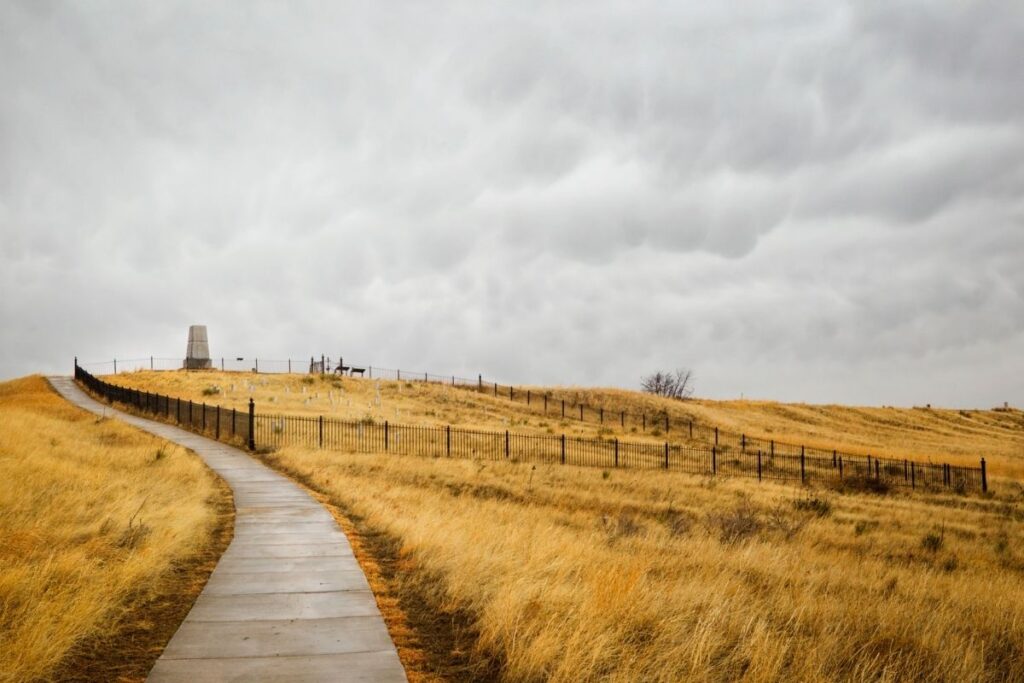
Nez Perce National Historical Park
The Nez Perce National Historical Park has 38 different sites within four states, Idaho, Oregon, Washington, and Montana. This park conserves different sites that were culturally and historically important to the different Native American tribes that inhabited the area before the European settlers. Tourists can come and visit the area to learn more about their way of life before European conquerors, their struggle to keep their way of life as settlers took control of their land, and the devastating effect of this on their people.
One of the prominent tribes was the Nimiipuu people. This tribe was a self-governing nation that was able to sustain its control over its territory through peace treaties with the government of the United States. Today, they reside in the Nez Perce Reservation with over 3,500 enrolled citizens and about 770,000 acres of land.
In Montana, there are three sites associated with the park. Namely, the Big Hole National Battlefield, Canyon Creek, and the Bear Paw Battlefield. These sites commemorate the battles of these native tribes for their culture and their people.
The Nez Perce National Historical Park was officially established in 1965 with the expansion of a museum in 1983.
Things to do: Walking, Historical Tours, Canoeing
How to get there: By plane, visitors can arrive through local airports in Buttle or Missoula. By car, travelers can make their way to the sites in Wisdom or Blaine County.
Where to Stay: Nez Perce extends to four states; Idaho, Montana, Oregon, and Washington. Travelers have many accommodation options near Montana’s relevant destinations like within Wisdom or in Blaine County.
Entrance Fee: Free
Official Website: Click Here
Map: Download
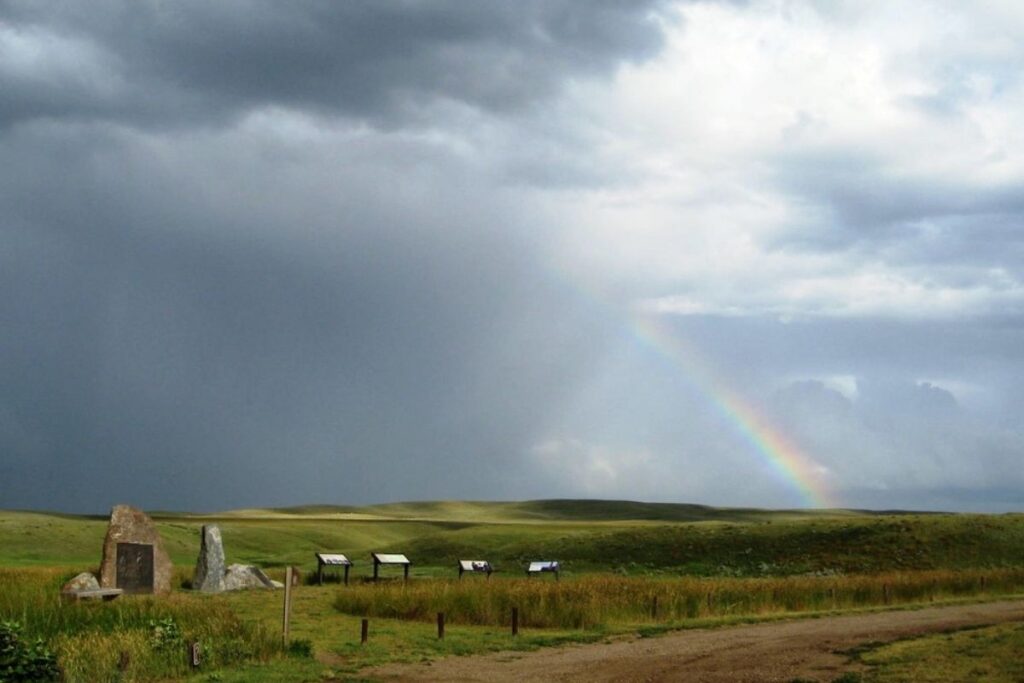
Yellowstone National Park
Yellowstone National Park is regarded as the first-ever national park in America, and in some reports, even the world. This park stretches across three states including Wyoming, Idaho, and Montana. It is famous for scenic hiking trails, picturesque views, amazing wildlife, and other natural wonders. Today, millions of visitors come annually to discover what nature has in store for them. From beautiful bodies of water to massive geological formations and geothermal features, this national park is perfect for any nature lover.
One of the most famous geothermal sites in the area is the Old Faithful geyser located in Wyoming, which erupts every 44 minutes to two hours since the year 2000. The Yellowstone National Park also consists of several lakes, and rivers as well as canyons and mountain ranges for visitors to come and explore. The name Yellowstone comes from the famous yellow colors found in the Grand Canyon of the Yellowstone, which is just the first canyon along the Yellowstone River. In Montana, you can visit the Madison River, The Gardner River, and the Gardner River Canyon.
This site was established as a national park on March 1, 1872, and is now a UNESCO World Heritage Site.
Things to do: Camping, Hiking, Backpacking, Geyser Gazing, Boat Tours, Wildlife Watching
How to get there: The available airports are Cody and Jackson, WY; Bozeman and Billings, MT; and Idaho Falls, ID. Bus Stations is located in Bozeman, MT to West Yellowstone, MT via Highway 191 is available all year.
Where to Stay: Yellowstone National Park offers a range of overnight lodging alternatives, including nine hotels, twelve campgrounds, and hundreds of backcountry campsites. Modern hotel rooms, rustic cabins, RV and tent campgrounds, and basic wilderness campsites are all available. Yellowstone National Park Lodges accepts bookings for five campgrounds.
Entrance Fee: $35 per vehicle or free with an America the Beautiful Pass.
Official Website: Click Here
Map: Download
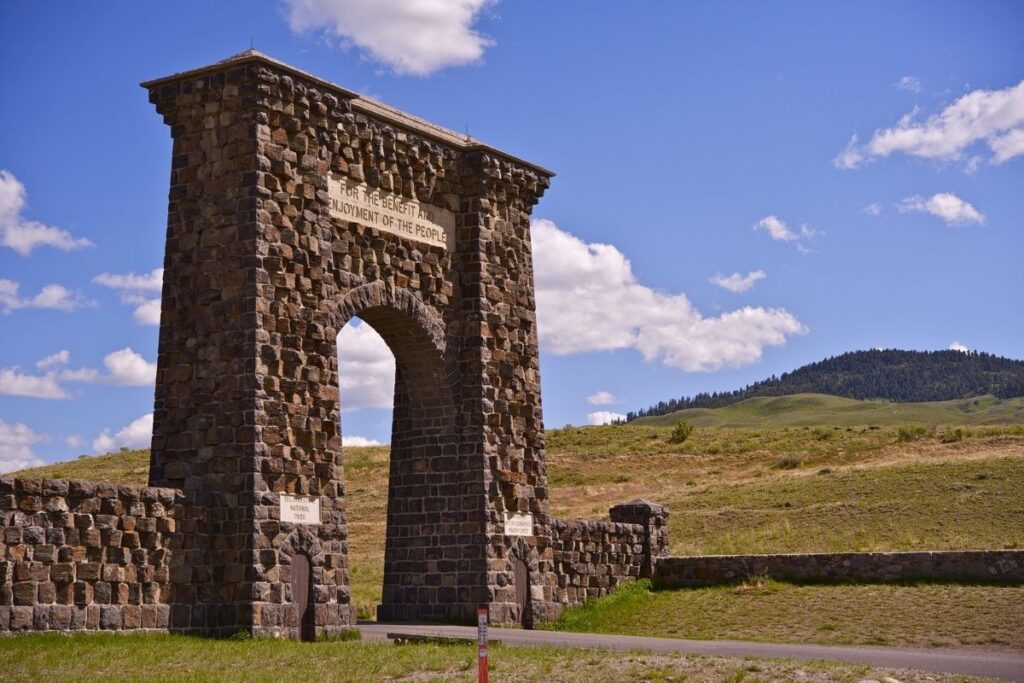
Affiliate Sites of Montana
Ice Age Floods Geologic Trail
The Ice Age Floods National Geologic Trail came about from the effects of the Glacial Lake Missoula floods during the last glacial period. This event caused different networks of trails to have unique geological formations throughout the four different states of Oregon, Idaho, Washington, and Montana.
About 18,000 to 15,000 years ago, an ice dam existed across these present-day states. After many changes of melting, and flooding the area, it now shaped what we know Pacific Northwest to be today.
This ice dam was called the Glacial Lake Missoula. It was originally where the water collected in Montana which eventually flooded the surrounding states.
Today, travelers can come and visit the Montana Natural History Center, which aims to promote the appreciation and stewardship of nature through education. Here they can learn more about the natural events that created the landscapes that we can see today.
This was the first-ever National Geological Trail established in America. This was designated in 2009.
Things to do: Hiking, Camping, Driving
How to get there: Major airports in Montana include Missoula International Airport, Billings Logan International Airport, and Bozeman Yellowstone International Airport.
Where to Stay: Travelers can choose from the cities in Montana to stay in that offers camping, hotel, and motels.
Entrance Fee: Free but various attractions along the trail may charge an entrance fee.
Official Website: Click Here
Map: Download
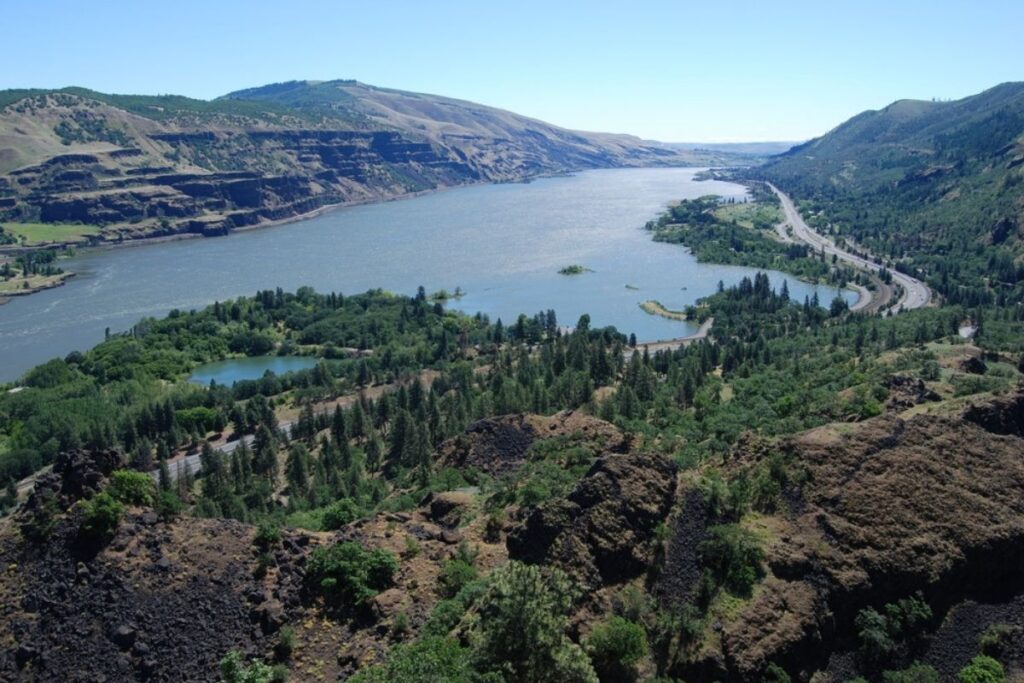
Lewis and Clark National Historic Trail
The Lewis and Clark National Historic Trail commemorates the famous expedition to explore the recently acquired land during the Louisiana Purchase. This new land includes sixteen present-day states. The trail stretches across Pennsylvania, Ohio, West Virginia, Kentucky, Indiana, Illinois, Missouri, Kansas, Nebraska, Iowa, South Dakota, North Dakota, Oregon, Idaho, Washington, and Montana.
The Louisiana Purchase acquired 828,000 square miles of land for fifteen million dollars from the Kingdom of France. To assert their power over inhabitants, explore what the area has to offer in terms of resources and goods, President Thomas Jefferson commissioned this exploration in the 19th century. Today, travelers can hike and go on their own journey along the trail and visit the nearby landmarks throughout the different states.
In Montana, the Lewis and Clark Expedition ventured through eight different areas in the state. One of the notable spots was the Great Falls. It is the largest city in northcentral Montana along the River’s Edge Trail. Back in the 19th century, the team of the expedition spent over a month just exploring these falls. This area features four campsites, five waterfalls, Giant Springs, and opportunities for many recreational activities like jogging, hiking, and more.
The Lewis and Clark National Historic Trail was expanded and established completely in 2019.
Things to do: Boating, Hiking, Fishing, Nature Sightseeing
How to get there: The Lewis and Clark National Historic Trail extends over 4,900 miles, passes through 16 states, and includes more than 100 sites from Pennsylvania to the Pacific Coast.
Where to Stay: Travelers can choose a variety of cities in Montana that offer lodging in Chester, Cascade, Great Falls, and other cities along the trail.
Entrance Fee: Free but various attractions along the trail may charge an entrance fee.
Official Website: Click Here
Map: Download
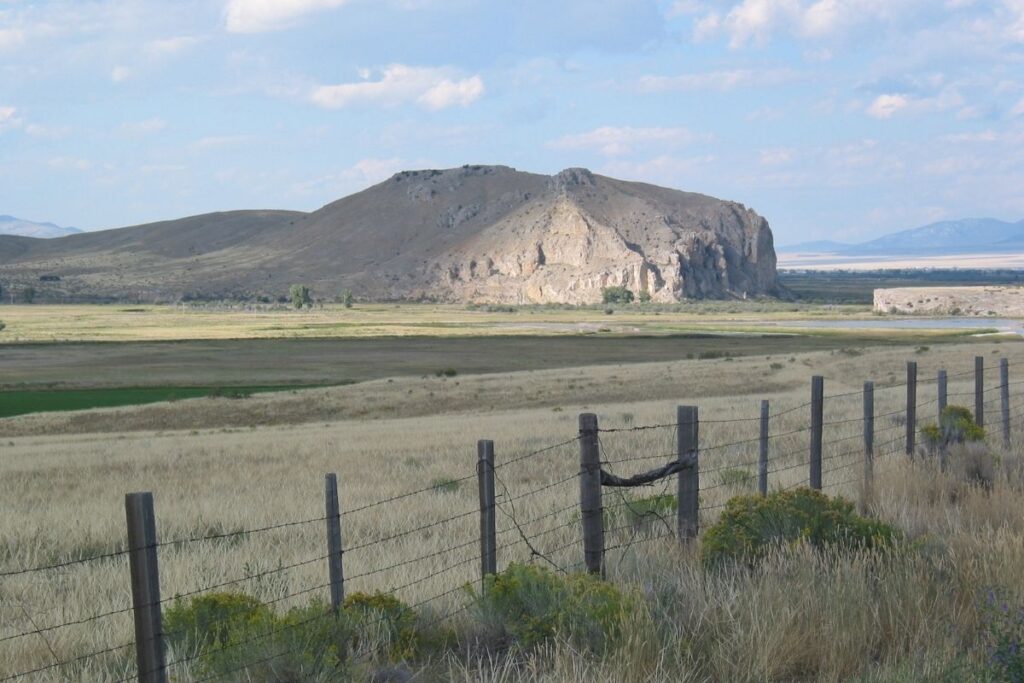
List of National Parks in Montana
There are 8 National Parks in Montana and they received 3.9 million visitors in 2020 and generated over $618.9 million in tourism economic benefits. The majority of visitors (3.6 million) are split between Glacier National Park and Yellowstone National Park.
- Big Hole National Battlefield
- Bighorn Canyon National Recreation Area (MT, WY)
- Fort Union Trading Post National Historic Site (ND, MT)
- Glacier National Park
- Grant-Kohrs Ranch National Historic Site
- Little Bighorn Battlefield National Monument
- Nez Perce National Historical Park (ID, MT, OR, WA)
- Bear Paw Battlefield
- Cayon Creek
- Yellowstone National Park (ID, MT, WY)
Affiliated Areas
- Ice Age Floods Geologic Trail (ID, MT, OR, WA)
- Lewis and Clark National Historic Trail (IA, ID, IL, IN, KS, KY, MO, MT, NE, ND, OH, OR, PA, SD, WA, WV)
Montana National Parks also provides support and management to 1 Wild and Scenic Rivers as well as 1,222 National Register of Historic Places Listings.
There are 28 National Historic Landmarks, 10 National Natural Landmarks, 558 Places recorded by the Heritage Documentation Program, and over 1.68 million objects in the Montana National Parks Museum Collections. There are 1,118 Archaeological Sites in the Montana National Parks.
Montana is home to 170 State Parks.
UNESCO World Heritage Sites in Montana
- Waterton-Glacier International Peace Park
- Yellowstone National Park
Montana’s Neighboring States
Planning to visit a few of the National Parks in Montana and wandering about what national parks are in neighboring states. Here are the list of National Parks in surrounding states.
- Idaho National Parks – Idaho is home to a small sliver of Yellowstone National Park and 6 other NPS units.
- North Dakota National Parks – North Dakota has Theodore Roosevelt National Park and 2 other units.
- South Dakota National Parks – South Dakota is home to Badlands National Park and Wind Cave National Park and 4 other NPS units.
- Wyoming National Parks – Wyoming has Grand Teton National Park and Yellowstone National Park (which it shares with Idaho and Montana) and 6 other units.
Final Thoughts on the National Parks of Montana
I hope this guide to the National Parks of Montana is helpful as you plan to explore these amazing National Parks.
Pin for Later: National Parks in Montana: Explore the 8 Montana National Parks (2021 Update)

Jennifer Melroy
Hi, I'm Jennifer!
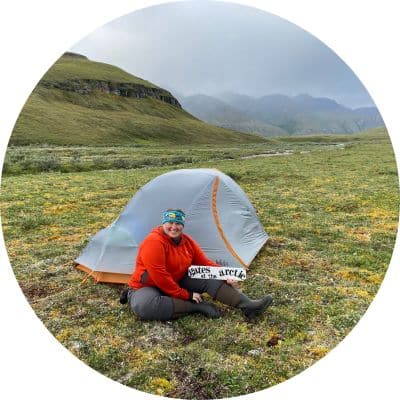
Welcome to the wonderful world of National Parks. I'm here to help you plan your NEXT amazing adventure through the United States National Parks and beyond. I want the national parks to be accessible to all.
I live in Tennessee, and when I'm home, you can find me hiking in the Smokies and the Cumberland Plateau.
58/63 National Parks
250+/423 National Park Units
Want to know more? Start Here.
ACKNOWLEDGEMENT OF LAND
On this site, we promote travel to the United States and beyond that are the traditional lands of Indigenous and First Nations peoples.
With respect, I make a formal land acknowledgment, extending my appreciation and respect to these lands’ past and present people.
To learn more about the people who call these lands home, I invite you to explore Native Land.
DISCLAIMER
National Park Obsessed assumes no responsibility or liability for any errors or omissions in the content of this site (NationalParkObsessed.com). The information contained in this site is provided with no guarantees of completeness, accuracy, usefulness or timeliness. You are encouraged to conduct your own due diligence before acting on the information provided on this site and should not rely on the opinions expressed here.
There is an inherent risk in all outdoor recreation activities, the reader assumes all responsibility for their own personal safety.
DISCLOSURE
We are a participant in the Amazon Services LLC Associates Program, an affiliate program designed to provide a means for us to earn fees by linking to Amazon.com and affiliated sites.
Privacy Policy • About Us • Contact
Select stock photography provided depositphotos
Copyright ©2023 National Park Obsessed, LLC
Privacy Overview
Last Updated on 22 Dec 2023 by Jennifer Melroy

